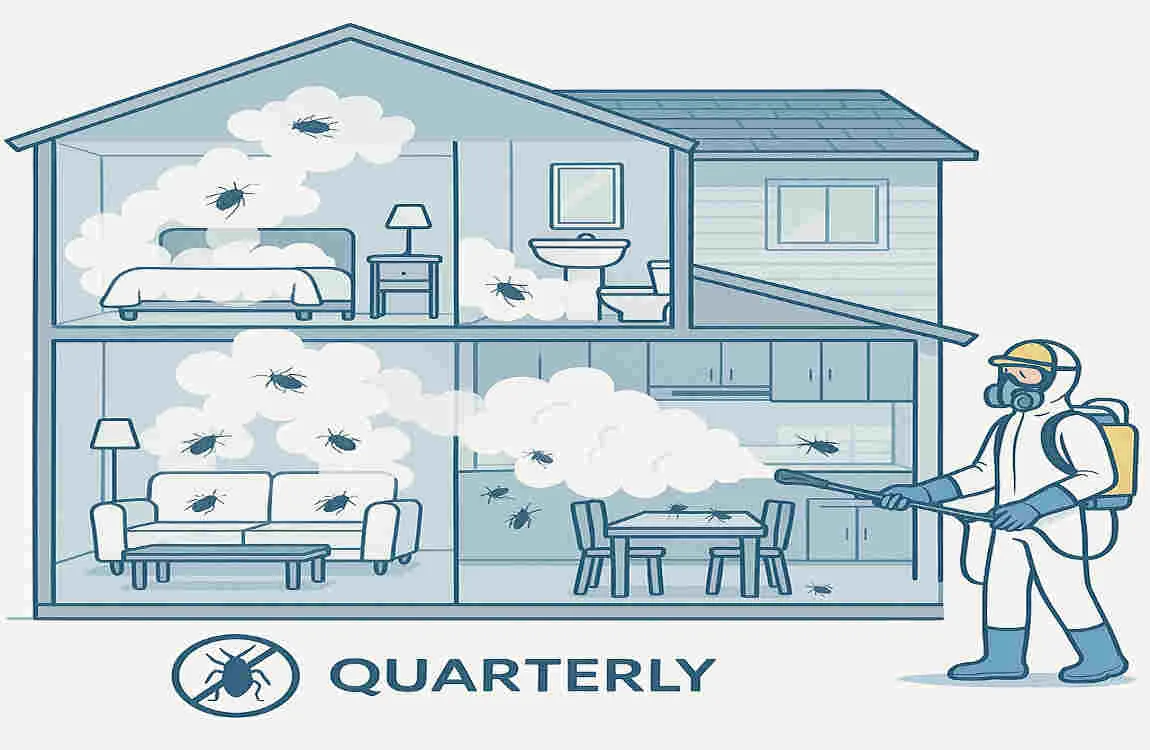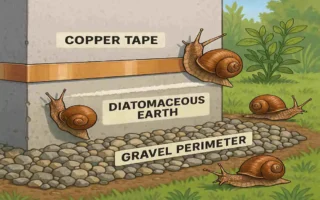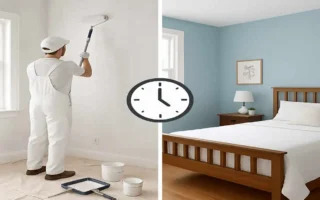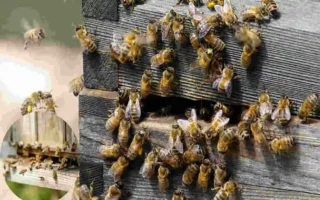Let’s face it, nobody wants to share their home with roaches. These pesky critters can turn your living space into a nightmare, causing health risks and damaging your property. But don’t worry, there’s a solution: fumigation.
We’ll cover everything from the basics of roach biology to the ins and outs of fumigation. You’ll learn about prevention tactics, physical and chemical control methods, and when to call in the professionals. By the end of this article, you’ll be armed with the knowledge to keep your home-roach free and your family safe.
What Are Cockroaches and Why Are They a Problem?
The Biology of Roaches
Cockroaches are resilient creatures that have been around for millions of years. They belong to the order Blattodea and are known for their flat, oval-shaped bodies and long antennae. These pests thrive in warm, humid environments and can survive on almost any food source, from crumbs to paper.
The Dangers of Roach Infestations
Roaches aren’t just a nuisance; they can pose serious health risks to you and your family. These pests can trigger allergies and asthma, especially in children. They can also contaminate your food and surfaces with bacteria like Salmonella and E. coli, leading to food poisoning and other illnesses.
The Challenge of Eliminating Roaches
Once roaches establish themselves in your home, they can be tough to get rid of. These pests reproduce quickly, with some species capable of producing up to 400 offspring in a single year. They can also hide in tiny cracks and crevices, making them hard to reach with traditional pest control methods.
Overview of Roach Control Strategies
Prevention: Keeping Roaches at Bay
The best way to deal with roaches is to prevent them from entering your home in the first place. This means maintaining a clean and tidy living space, sealing up any cracks or gaps in your walls and floors, and reducing moisture levels in your home. By taking these simple steps, you can make your home less attractive to roaches and reduce the risk of an infestation.
Physical Control Methods: Traps and Baits
If you do spot a roach in your home, you can use physical control methods to eliminate it. Traps and baits are practical tools for catching and killing roaches. Please place them in areas where you’ve seen roach activity, such as under the sink or behind the fridge. Just be sure to keep them out of reach of children and pets.
You may also read (how to implement effective pest control in home renovations).
Chemical Control Methods: Insecticides and Fumigation
When prevention and physical control methods aren’t enough, it may be time to turn to chemical control methods. Insecticides and baits can be effective at killing roaches, but they must be used carefully to avoid harming yourself or your family. Fumigation, on the other hand, is a more aggressive approach that involves filling your home with a gas that kills roaches on contact.
When to Use Fumigation
Fumigation is typically used as a last resort when other control methods have failed. It’s a powerful tool for eliminating severe roach infestations, but it requires careful planning and execution to ensure your safety. If you’re considering fumigation, it’s best to consult with a professional pest control service to determine if it’s the right choice for your situation.
Understanding Fumigation for Roach Control
What is Fumigation and How Does it Work?
Fumigation is a process that involves filling your home with a gas that kills roaches and other pests on contact. The gas penetrates deep into cracks and crevices, reaching areas that other control methods can’t. Fumigation is a highly effective way to eliminate severe roach infestations, but it requires careful preparation and execution to ensure your safety.
Types of Fumigation Methods
There are three main types of fumigation methods: total, spot, and structural. Total fumigation involves filling your entire home with gas, while spot fumigation targets specific areas where roaches are present. Structural fumigation, on the other hand, consists of treating the whole structure of your home, including walls, floors, and ceilings.
Pros and Cons of Fumigation for Roaches
Fumigation has several advantages when it comes to roach control. It’s highly effective at eliminating severe infestations, and it can reach areas that other control methods can’t. However, fumigation also has some drawbacks. It can be expensive, and it requires careful preparation and execution to ensure your safety. Additionally, fumigation may not be suitable for all homes, especially those with sensitive occupants or valuable items.
Safety Considerations and When to Call Professionals
Fumigation can be dangerous if not done properly, so it’s essential to take safety precautions. This includes evacuating your home during the fumigation process, sealing up any food and water sources, and following all instructions from your pest control service. If you’re unsure about fumigation or feel uncomfortable doing it yourself, it’s best to call in the professionals. They have the knowledge and experience to safely and effectively fumigate your home.
How Often Should I Fumigate My House for Roaches? — Key Factors

Why Frequency Varies by Infestation Severity and Household Conditions
The frequency of fumigation depends on several factors, including the severity of your roach infestation and the conditions in your home. If you have a severe infestation, you may need to fumigate more frequently to keep the roach population under control. On the other hand, if you have a mild infestation or have taken steps to prevent roaches from entering your home, you may be able to fumigate less often.
Factors Influencing Fumigation Frequency
Several factors can influence how often you need to fumigate your home for roaches. These include:
- Level of infestation: If you have a severe infestation, you may need to fumigate more frequently to keep the roach population under control.
- Environmental conditions: Roaches thrive in warm, humid environments, so if you live in an area with high humidity, you may need to fumigate more often.
- Home construction and vulnerability points: If your home has cracks or gaps in the walls or floors, roaches can easily enter and establish themselves. In this case, you may need to fumigate more frequently to keep them at bay.
- Effectiveness of previous treatments: If previous treatments have been effective at controlling the roach population, you may be able to fumigate less often. However, if the roaches continue to return, you may need to fumigate more frequently.
Typical Fumigation Frequency Recommendations by Pest Control Experts
Pest control experts typically recommend fumigating your home every 3-6 months for severe roach infestations. For mild infestations, you may be able to fumigate every 6-12 months. However, these are just general guidelines, and the frequency of fumigation will depend on your specific situation.
Warning Against Over-Fumigation and Potential Risks
While fumigation can be an effective tool for controlling roach infestations, it’s important not to overdo it. Over-fumigation can be harmful to your health and the environment, and it can also lead to roach resistance. If you’re unsure about how often to fumigate your home, it’s best to consult with a professional pest control service.
Signs You Need to Fumigate Again
Persistent or Increasing Roach Sightings
If you’re still seeing roaches in your home after fumigation, it may be time to fumigate again. Persistent or increasing roach sightings are a sign that the infestation is not under control and that further treatment is needed.
Evidence of Roach Breeding
If you spot roach droppings or egg cases in your home, it’s a sign that the roaches are breeding and that the infestation is getting worse. In this case, you may need to fumigate again to eliminate the roach population.
You may also read (9 ways air duct cleaning improves your homes comfort and hvac health).
Return of Smell or Visual Damage
If you notice a return of the musty smell or visual damage caused by roaches, it’s a sign that the infestation is back and that further treatment is needed. Fumigation can help eliminate the roach population and prevent further damage to your home.
Importance of Regular Monitoring
Regular monitoring is key to keeping roach infestations under control. By keeping an eye out for signs of roaches and taking action when necessary, you can prevent the infestation from getting worse and reduce the need for frequent fumigation.
Steps to Prepare Your Home for Fumigation
Pre-Fumigation Cleaning and Decluttering
Before fumigating your home, it’s essential to clean and declutter the space. This includes removing any food or water sources that could attract roaches and clearing out any clutter that could provide hiding spots. By preparing your home correctly, you can ensure that the fumigation is as effective as possible.
Protecting Pets, Plants, and Food
Fumigation can be harmful to pets, plants, and food, so it’s essential to take steps to protect them. This includes removing any pets or plants from the home during the fumigation process and sealing up any food or water sources. By taking these precautions, you can ensure the safety of your loved ones and belongings.
Moving Furniture and Covering Sensitive Items
To ensure that the fumigation gas reaches all areas of your home, you may need to move furniture and cover sensitive items. This includes moving any large pieces of furniture away from the walls and covering any sensitive electronics or valuables. By taking these steps, you can ensure that the fumigation is as effective as possible.
Communicating with Professional Pest Control Services
If you’re working with a professional pest control service, it’s essential to communicate with them about the fumigation process. This includes discussing any concerns or questions you may have and following their instructions for preparing your home. By working together, you can ensure that the fumigation is safe and effective.
Post-Fumigation Measures to Prevent Roach Recurrence
Ventilation and Airing Out the House Safely
After fumigation, it’s essential to ventilate and air out your home to remove any remaining gas. This includes opening windows and doors, as well as using fans to circulate the air. By taking these steps, you can ensure that your home is safe to re-enter.
Ongoing Sanitation Habits
To prevent roaches from returning, it’s essential to maintain good sanitation habits. This includes keeping your home clean and tidy, sealing up any food or water sources, and reducing clutter. By maintaining a clean living space, you can make your home less attractive to roaches and reduce the risk of an infestation.
Sealing Cracks and Structural Maintenance
Roaches can enter your home through tiny cracks and gaps in the walls and floors, so it’s essential to seal them up to prevent an infestation. This includes using caulk or weatherstripping to seal up any cracks or gaps and maintaining the structure of your home. By taking these steps, you can make your home less vulnerable to roaches.
Using Baits and Traps as Follow-Up Steps
After fumigation, use baits and traps as a follow-up step to eliminate any remaining roaches. Please place them in areas where you’ve seen roach activity and keep them out of reach of children and pets. By using baits and traps, you can ensure that the roach population is under control.
Scheduling Periodic Inspections and Touch-Ups
To keep roach infestations under control, it’s important to schedule periodic inspections and touch-ups. This includes working with a professional pest control service to monitor your home for signs of roaches and taking action when necessary. By staying proactive, you can prevent roach infestations from getting worse and reduce the need for frequent fumigation.
Alternative and Complementary Roach Control Methods
Integrated Pest Management (IPM) Approach
Integrated Pest Management (IPM) is a holistic approach to pest control that combines prevention, physical control, and chemical control methods. By using IPM, you can reduce your reliance on fumigation and other chemical control methods and take a more sustainable approach to roach control.
Natural Remedies vs. Chemical Approaches
Several natural remedies can be effective at controlling roach infestations, including diatomaceous earth, boric acid, and essential oils. These remedies are often safer and more environmentally friendly than chemical control methods, but they may not be as effective at eliminating severe infestations.
When to Combine Fumigation with Other Treatments
In some cases, it may be necessary to combine fumigation with other treatments to control roach infestations effectively. This includes using baits and traps as a follow-up step to fumigation and incorporating prevention tactics into your overall pest control strategy. By combining multiple control methods, you can ensure that the roach population is under control.
Cost and Budget Considerations for Fumigation
Average Costs of a Professional Roach Fumigation
The cost of a professional roach fumigation can vary depending on several factors, including the size of your home, the severity of the infestation, and your location. On average, you can expect to pay between $1,000 and $3,000 for a professional fumigation.
Factors Affecting Price
Several factors can affect the price of a professional roach fumigation, including:
- Home size: The larger your home, the more expensive the fumigation will be.
- Infestation severity: If you have a severe infestation, the fumigation may be more costly due to the need for more extensive treatment.
- Location: The cost of fumigation can vary depending on your location, with prices typically higher in urban areas.
Comparing DIY Products vs. Professional Services
While DIY products can be a more affordable option for roach control, they may not be as effective as professional services. Professional pest control services have the knowledge and experience to safely and effectively fumigate your home, and they can also provide ongoing support and monitoring to keep the roach population under control.
You may also read (termites professional control v sdiy natural solutions).




